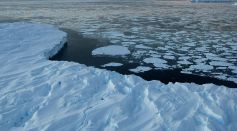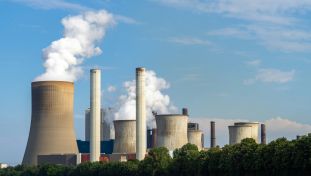ENVIRONMENT & CLIMATE

A Global Study Shows That Millennials Have the Lowest Faith in Democracy

Air Pollution Causes People to Choose Food Delivery Services, Resulting in Plastic Pollution

A New Study Finds That Tropical Cyclones Have Started Moving Faster
Harvard Researchers Link Particulate Matter from Air Pollution to Neurodegenerative Diseases
Virus Kills White-Tailed Deer, Hunters Offered Refunds
Satellites Detected the Largest, Warmest Marine Heatwave, "Blob 2.0," Off the Coast of California
Lone White Baby Sea Turtle Found in Kiawah Island

Climate Change May be Responsible for the Increase of Shark Attacks in Australia
Sahel Region is a Canary in the Coalmine of the Warming Planet

A Large Feline Geoglyph Appears at the Nazca Lines UNESCO World Heritage Site

Coalition of Female Scientists Call for a Marine Protected Area in Antarctica
Mammals and Birds Were Not Warm-Blooded Not Until the Greatest Mass Extinction

New Retrieval Attempt at the Titanic Reignites Debate
New Study Suggests White Noise for Sleeping May Do More Harm Than Good
Most Popular

Microplastics Are Everywhere — How Plastic Pollution Threatens Wildlife, Soil, and Water

Brain Health Aging Guide: Effective Strategies for Cognitive Decline Prevention and Lower Dementia Risk

How Scientists Use Radio Telescopes to Search for Alien Signals Across the Universe

Mitochondrial Health and Aging: How Cell Energy Drives Modern Anti-Aging Science





